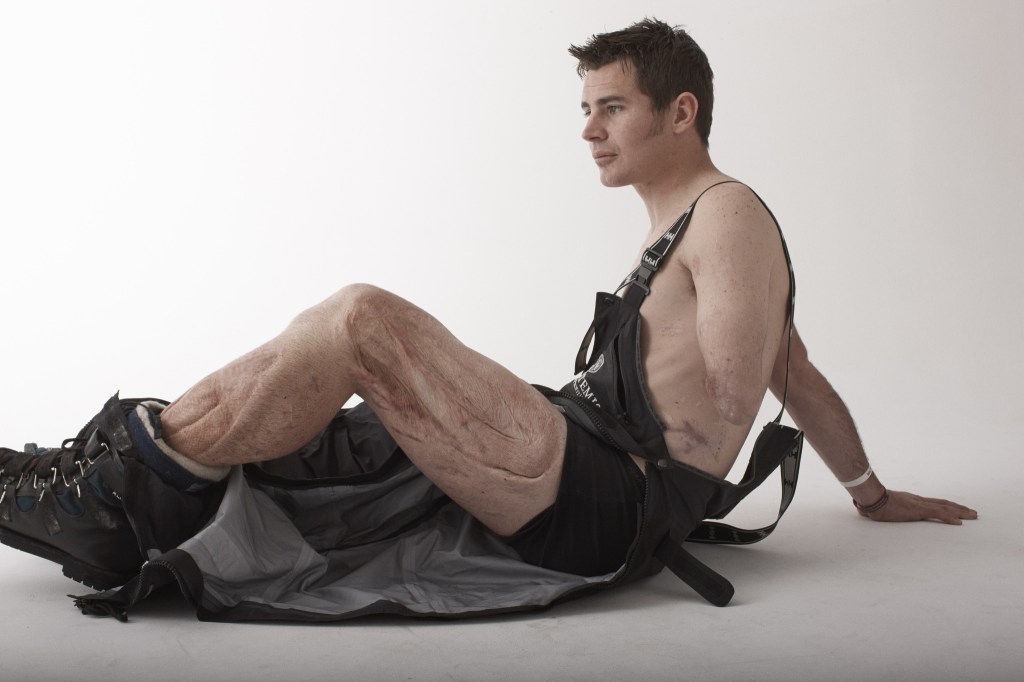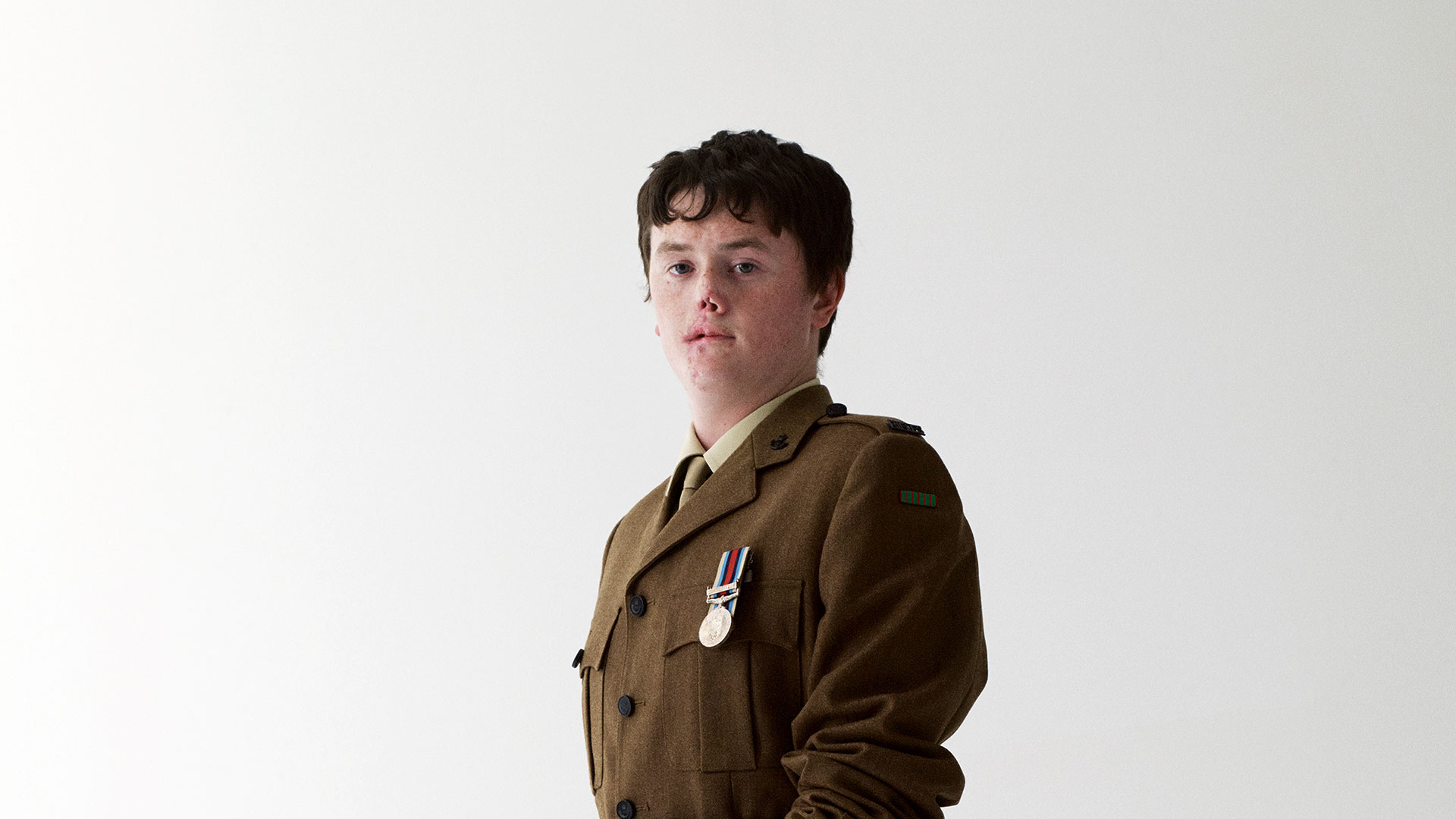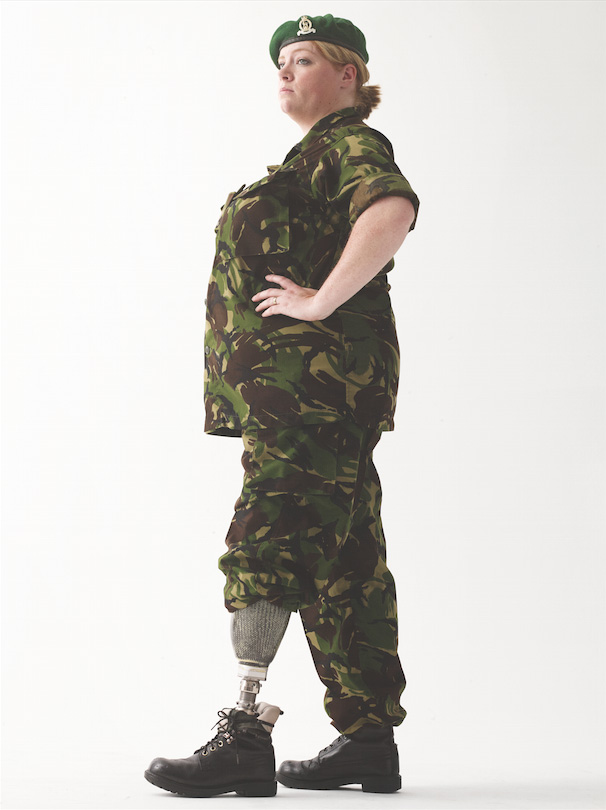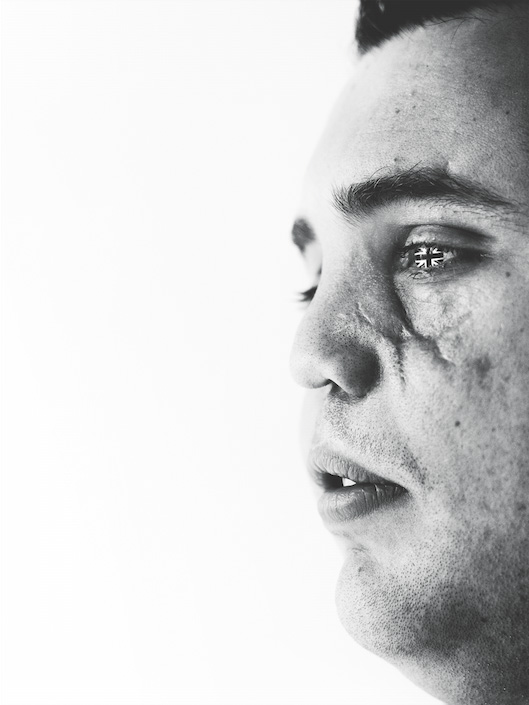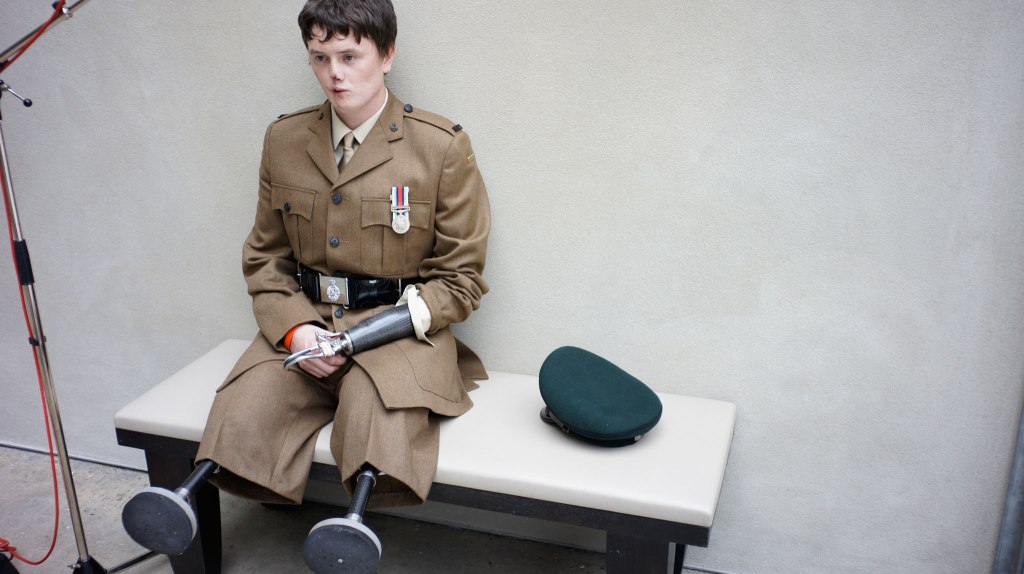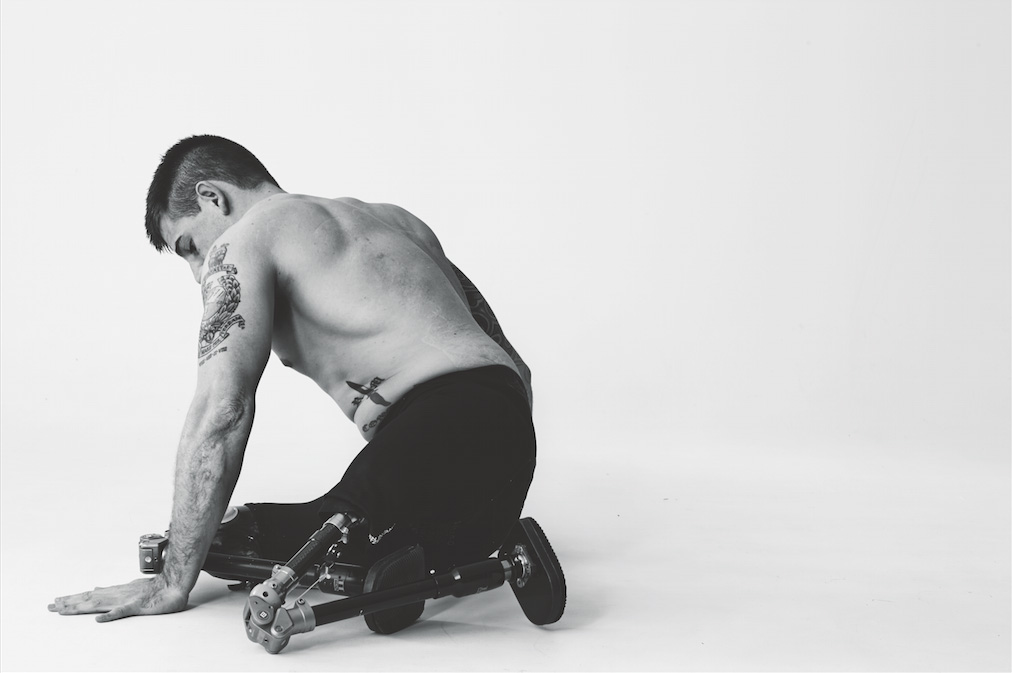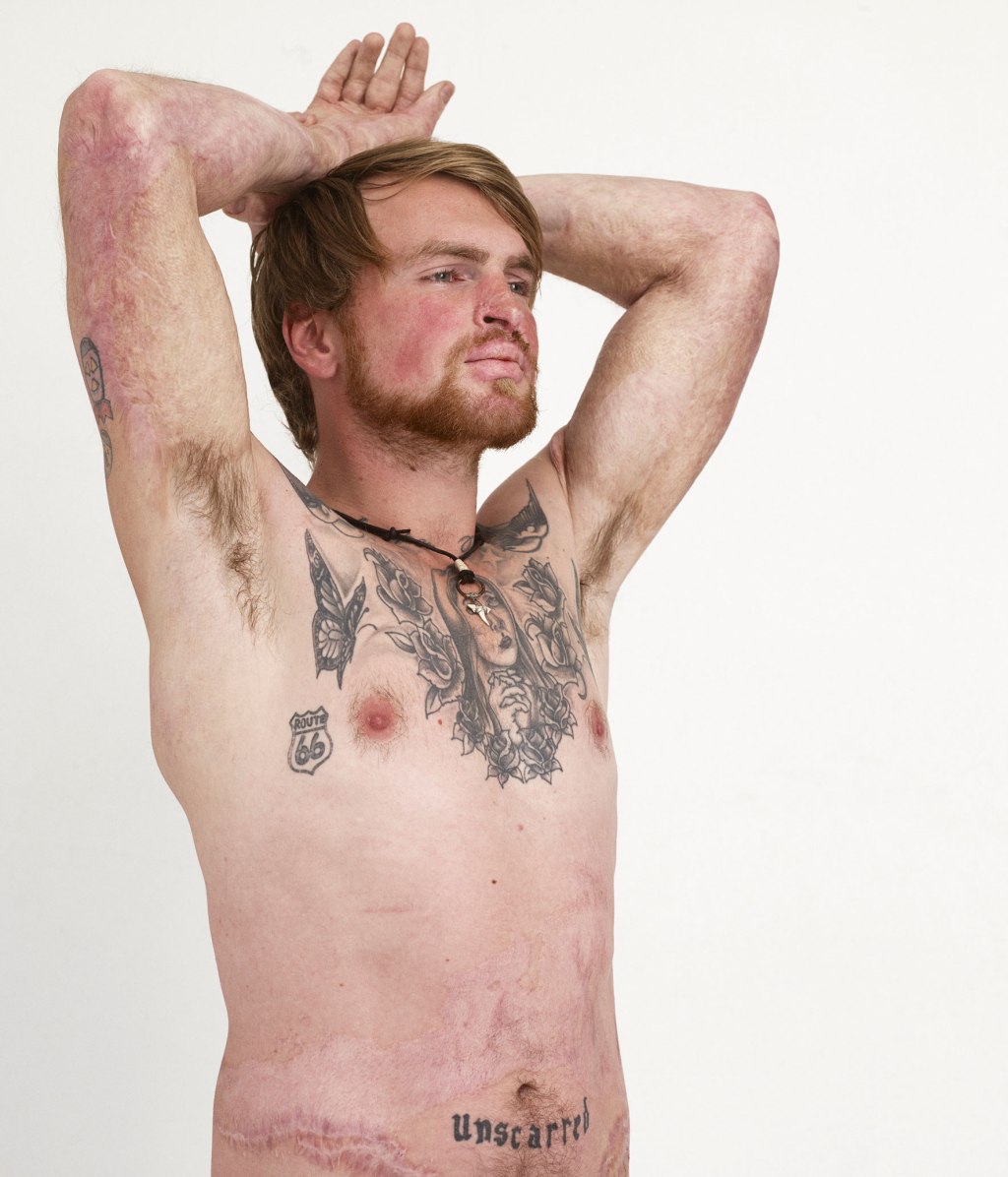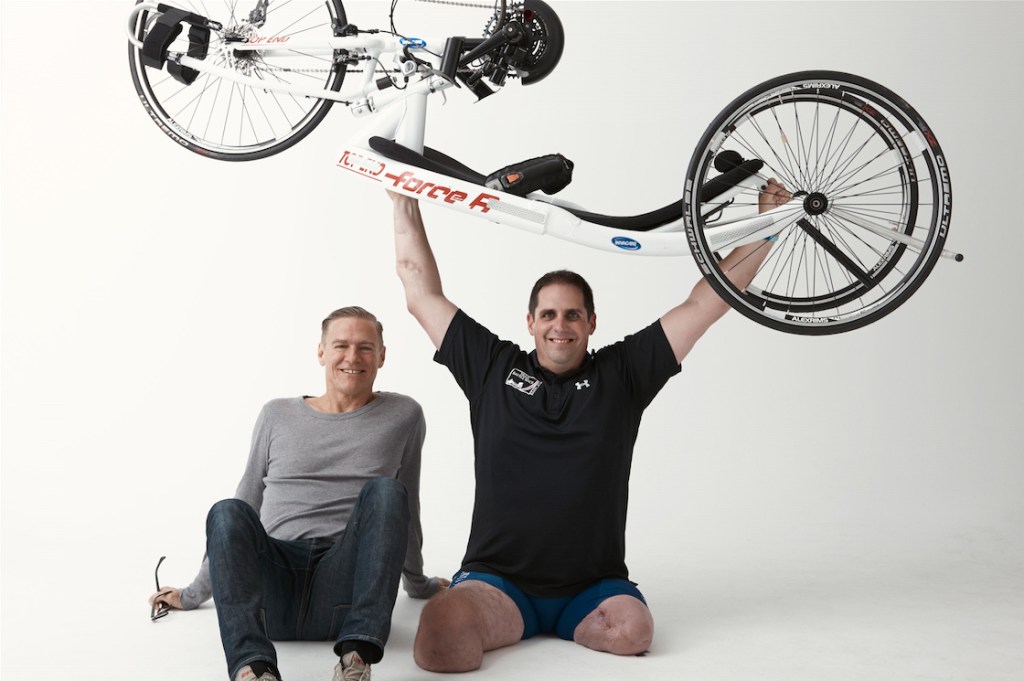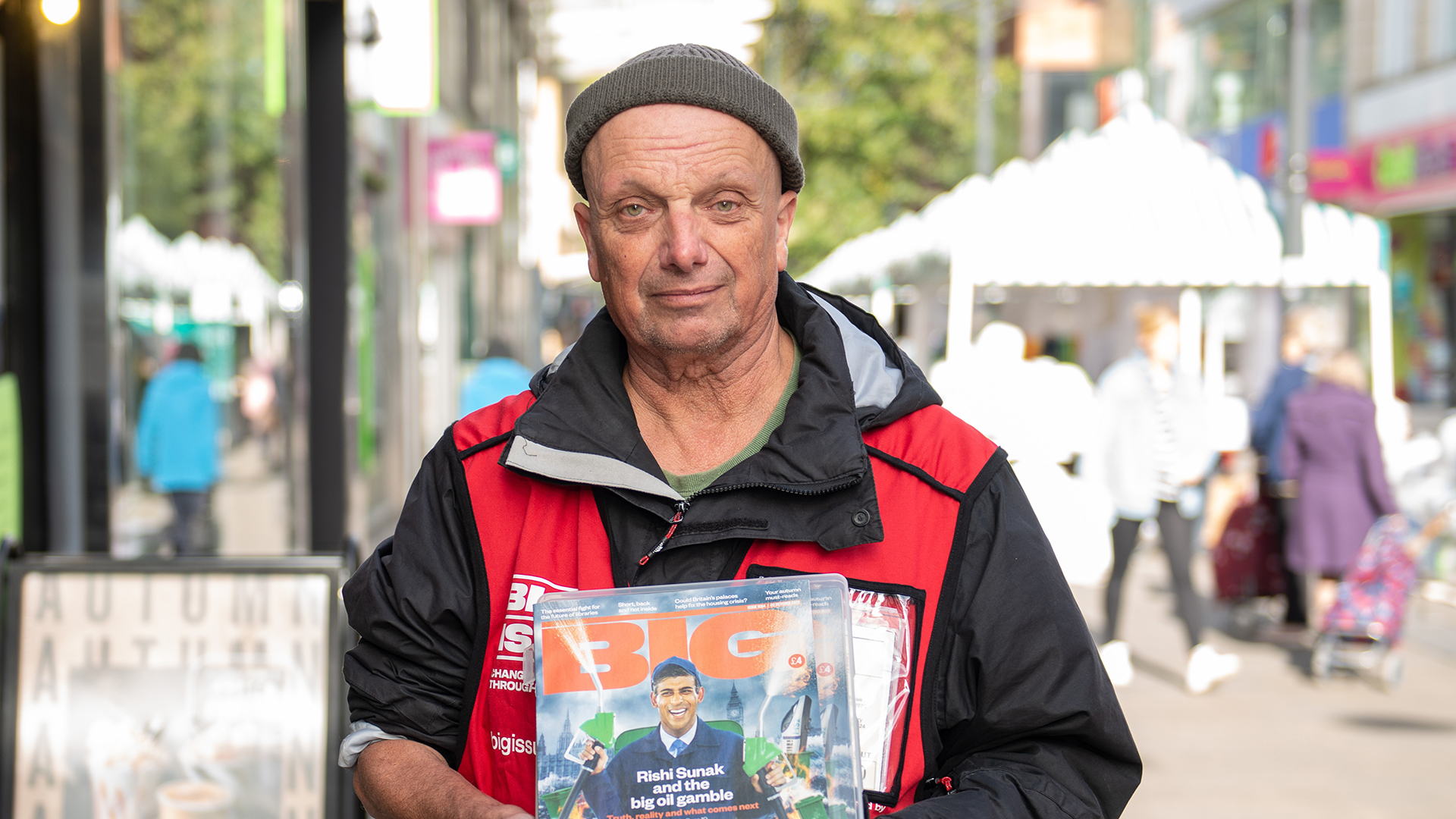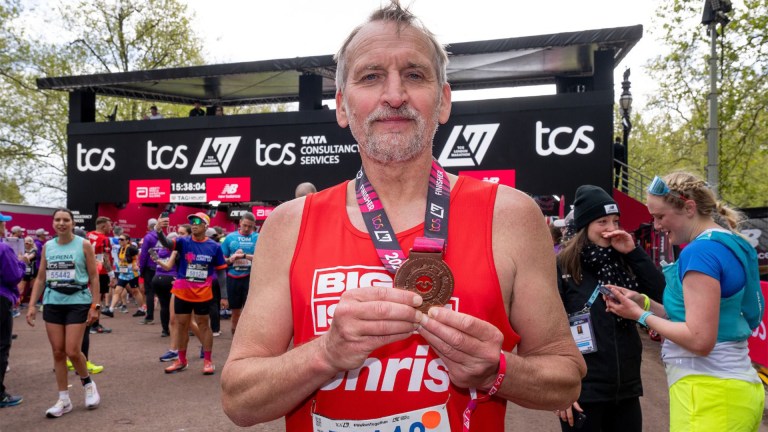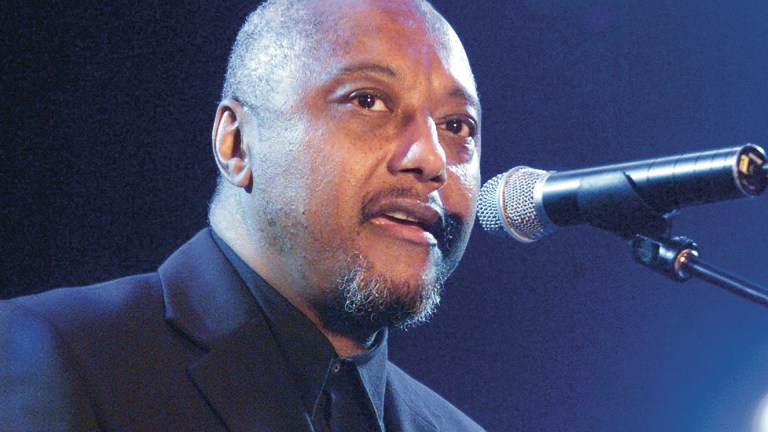2. Corporal Hannah Campbell – Injured in Iraq, 2007, aged 22
A mortar came through the roof of a guard room and detonated beneath Hannah. Her leg was badly damaged, she had facial injuries and her sight was damaged. “It was three years before I made the decision to have my leg amputated – three long years in a wheelchair and on crutches. I never wore two shoes and I was never pain-free. So when they suggested it, I knew it was the right decision. I knew I would be a more effective mum, I’d be able to give more to my child without a leg than with a leg. That was what was important. I knew life would improve for my whole family if I had my leg amputated and that made the decision easier. I think my daughter thinks that mummy’s robot leg is quite novel and she likes to show her friends. So I don’t think she sees it as a bad thing at all. I hope she’s proud of me.”
3. Corporal Simon Brown – Injured in Iraq, 2006, aged 28
Simon was shot through the face: a bullet hit his left cheek, went through his nose and came out of his right cheek. He held his palate up with his thumb to breathe and tried to bandage his own face. Told in hospital he was blind in his left eye, with 20 per cent sight in the right, he had suicidal thoughts and considered taking an overdose. But news of friends who had died started to turn his thinking around. He made huge steps: making a cup of tea, going for a few pints with old rugby teammates, getting a home of his own and a cat to take care of, and volunteering to work with disadvantaged children.
I can’t believe to this day that no one was held accountable for the outrageous lies we were told going into war
“Then this opportunity came along with the organisation I work for now, Blind Veterans UK. They wanted me to speak to people to try and convince them it was a good idea to get some rehab. I found I was quite good at that, I’ve rebuilt my life in under six years. And if I can do it, anyone can. What a great job, to go out helping people in situations like mine. You’ve got these guys who have the world at their fingertips, and all of a sudden it’s been taken off them. I think the biggest challenge is trying to see a future. Every time I get up and go to work I feel I am doing something good again with my life. I lost my career in the Army and thought everything was over. But I look back at the last six-and-a-half years and I think I’m probably a better person now than before because of the opportunities I’ve had, the things I’ve done, the people I’ve helped and what I’m actually doing with my life now.”
4. Rifleman Craig Wood – Injured in Afghanistan, 2009, aged 18
An IED exploded while Craig was on patrol, and he lost both legs and an arm. “It was probably a good two to three months before what had happened to me really started to sink in. I had one bad day when I was looking around in hospital thinking, ah right, well they’ve all got legs and everything. I had a little cry about that but I just got over it really. Things improved when I moved to Headley Court. It’s great because everyone there is learning how to adapt to their injuries. The banter’s good, like being back in the Army properly. The thing I find hardest nowadays is stairs without handrails – aeroplanes are a bit of a nightmare but I just try and get on with everything.
“I’m not too sure what my future plans are. I just want to get on with the present. I was a windsurfer and I sailed, it was quite a big part of my life. I’ve started getting into Paralympics sailing but I’ve got to see how it pans out. I really do appreciate life now. I’ve been so close to death that I really appreciate life, family, friends. So yeah, I think that what happened changed me but in a better way.”
5. Marine Joe Townsend – Injured in Afghanistan, 2008, aged 19
Joe lost both legs when an IED exploded. After a series of operations his left leg was amputated just below the hip. His wounds were severely infected and he spent almost six months bed-bound, then three years in and out of rehabilitation. “I think my family find it hard to believe, as I do, how far I’ve come. I’ve gone from being a frail, injured little boy in hospital to a strong endurance athlete who’s competed in some of the toughest events in the world, ones able-bodied people struggle to do. I suppose I’ve got that typical Royal Marines grip where you need to keep pushing yourself and finding new challenges. And it’s a way of me saying thank you to my family for being there while I was weak and struggling and needing them; of proving I’ve overcome this injury.”
6. Private Karl Hinett – Injured in Iraq, 2005, aged 18
When his tank was attacked while he was on duty in Basra Karl was engulfed by fire. He sustained 37 per cent third-degree burns at full thickness to his hands, face, arms and legs.
“Before I was burnt and injured and scarred, I had no tattoos at all. So I figured, why not try something new? I had ‘unscarred’ written, initially because I found it ironic that a tattoo is really a scar itself. But it also fits because I’ve never needed counselling – I’ve always thought that, physically, I am scarred but mentally nothing’s changed. I never have flashbacks, though I do think about that day all the time. I don’t mind looking back on it because I can rest knowing that it was only really me who got injured, none of my friends were seriously hurt.
“I couldn’t walk for nearly a month. One of the biggest obstacles was my skin breathing and sweating when doing exercise but it was just something to overcome. I am going to run a marathon every weekend, to say thank you to all the hospitals, doctors and nurses.”
These are edited excerpts from the book Wounded: The Legacy of War (Steidl, £50) out on November 11. Proceeds from the book go to the charities BLESMA, Blind Veterans UK, Combat Stress, SSAFA and War Child. The photographs feature in an exhibition at Somerset House, from November 12–January 25
